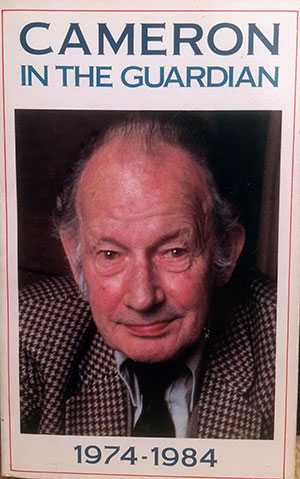James Cameron, Studs Terkel and the 1968 Chicago anti-war protests….
 The first of my posts looking back on the remarkable year of 1968 begins with the Chicago anti-war protests and the participation of sorts of two of my journalistic heroes, James Cameron and Studs Terkel. It was a pivotal moment in a year of protests against American involvement in Vietnam and came on the back of previous aggressive protests for the death of Dr Martin Luther King some four months earlier. Americans were angry, trust in the government’s ability or desire to end the war in Vietnam and bring equality to its own citizens was at an all-time low and in 1968 the people took to the streets like never before.
The first of my posts looking back on the remarkable year of 1968 begins with the Chicago anti-war protests and the participation of sorts of two of my journalistic heroes, James Cameron and Studs Terkel. It was a pivotal moment in a year of protests against American involvement in Vietnam and came on the back of previous aggressive protests for the death of Dr Martin Luther King some four months earlier. Americans were angry, trust in the government’s ability or desire to end the war in Vietnam and bring equality to its own citizens was at an all-time low and in 1968 the people took to the streets like never before.
As the Chicago Democratic Convention of August 26th-29th reflected on a turbulent year of protests which saw some one hundred riots across US cities following the assassination of King and its own presidential hopeful, Bobby Kennedy, the Chicago Mayor, Richard J. Daley braced himself for the arrival of The Youth International Party aka ‘Yippies’ and the National Mobilization Committee to End the War in Vietnam and its supporters. Daley made it quite clear in the run-up to the convention that protestors would not be allowed to take over the streets and he stayed true to his word. Ten thousand protestors were met by twenty three thousand police and National Guardsmen, it was about to turn ugly.
In Grant Park, one young protestor lowered the American flag to the cheers of those around him, the police swiftly moved in and began beating the man as they themselves came under a barrage of physical and verbal abuse. What followed was an inordinate use of tear gas to push the crowds back, Daley insisted his eleven o’ clock curfew would be observed to the minute. In Stud’s Terkel’s 1977 Talking to Myself (Pantheon Books) the author recalls how he had been surrounded by peaceful protestors who had dissuaded the more aggressive amongst them to settle down for the good of the cause. He convinces James Cameron that following the previous nights trouble this particular evening would pass without incident until three minutes later Cameron points him towards a ‘Roman legion. So it seems. We see helmets and shields, face shields of plastic. We see no faces. We are, all of us, transfixed’
As the hour of curfew came, so the police trucks mobilised and with them came the tear gas. Terkel: ‘Canisters of tear gas are being shot out from the tank-like trucks. Held noses and wet handkerchiefs do little good. We are coughing, hawking, crying, spitting, phlegming, cursing…We are helpless. And humiliated. The humiliating attributes of tear gas are astonishing’ Terkel paints a vivid scene of helpless, mostly peaceful protestors at the mercy of a police presence which the later published Walker Report would heavily criticise; ‘unrestrained and indiscriminate police violence on many occasions, particularly at night. That violence was made all the more shocking by the fact that it was often inflicted upon persons who had broken no law, disobeyed no order, made no threat. These included peaceful demonstrators, onlookers, and large numbers of residents who were simply passing through, or happened to live in, the areas where confrontations were occurring’
But the city’s Mayor has none of it, later claiming he received some 135,000 letters of support against 5,000 complaints and despite the police brutality, polls held afterwards showed the majority of the American public backed Daley’s strong-arm tactics. Like on so many other occasions in 1968 and throughout the mid sixties, the nation would divide over both the war in Vietnam and the civil rights movement.
Terkel observes these findings first-hand: ‘The whole city, it seems, is possessed by the wailing of banshees. Nobody is in his right mind. Cars are racing past. We see the faces of the occupants. They are crazy with fear. Of us. One car deliberately swerves towards the island, on which we hover. I see the driver’s face. It is distorted. Hate and terror. Of us. His hand is on the horn; stuck to it. Noise and confusion. We cry out. The car’s fender scrapes against a young islander. It knocks him down. He howls, jumps up and beats against the window. Others join him, Banging away at the car, they almost overturn it. Sirens. Horns. Rage. Madness’
The protests would continue as would the strong arm response from the state, culminating two years later in the tragedy at Kent State University. 1968 was the year of protest, the people spoke out against an oppression on both home soil and Vietnam which bitterly divided opinion, they were dark days indeed.
Categories: 1968-A Review, Reportage






